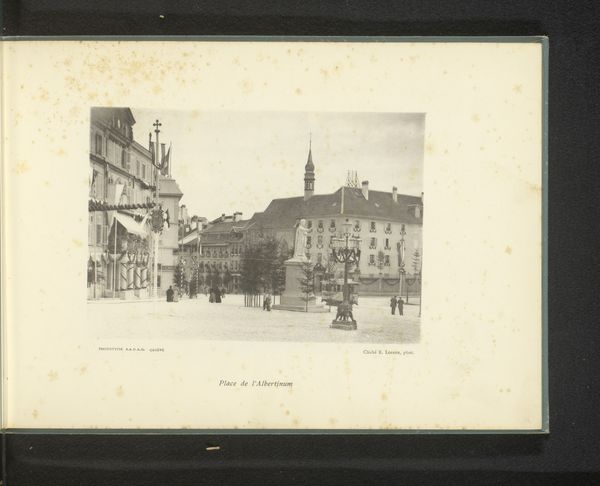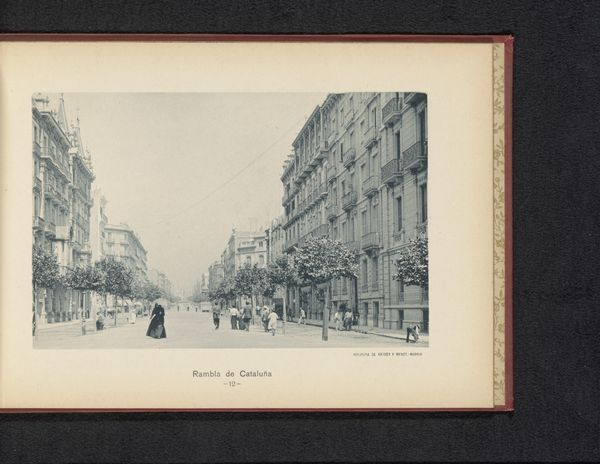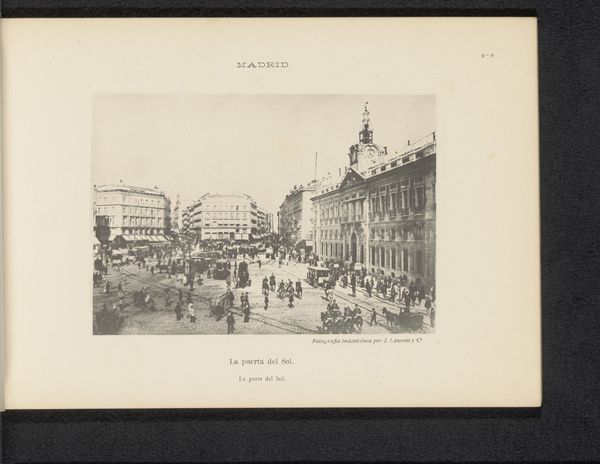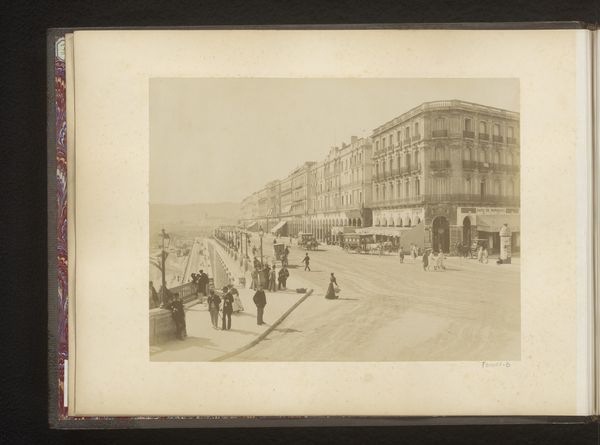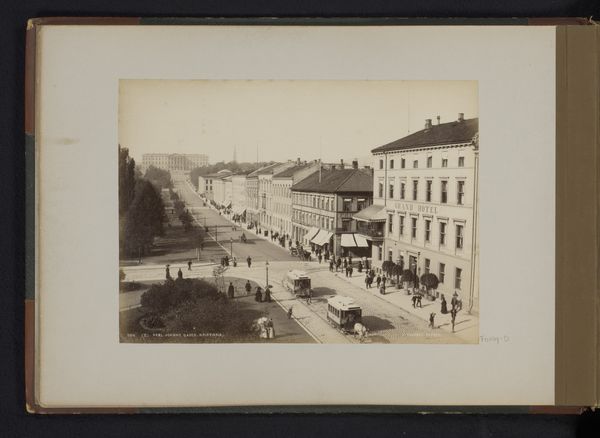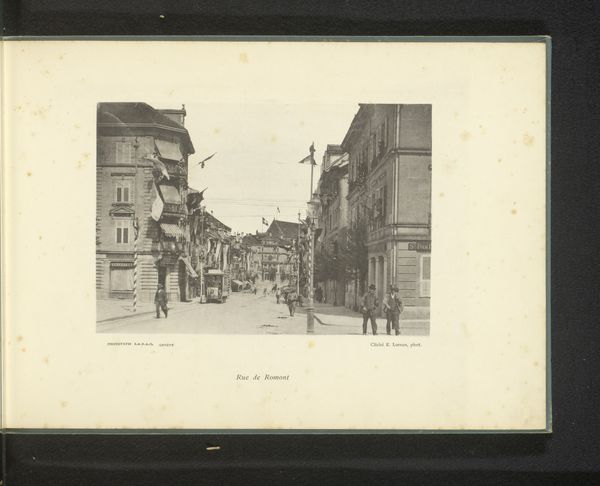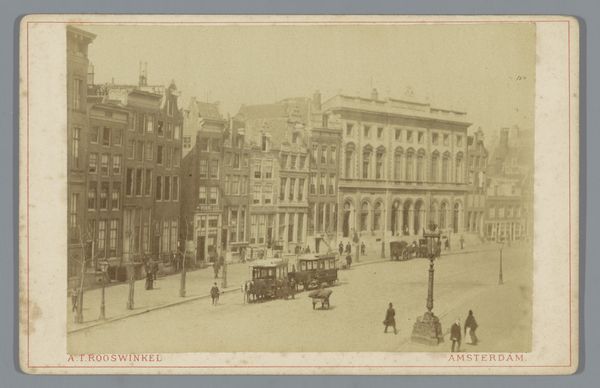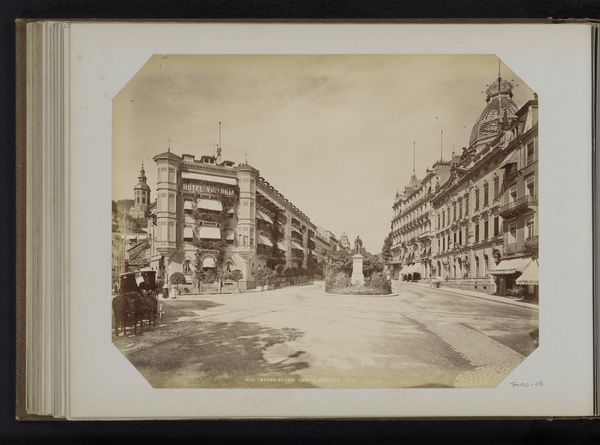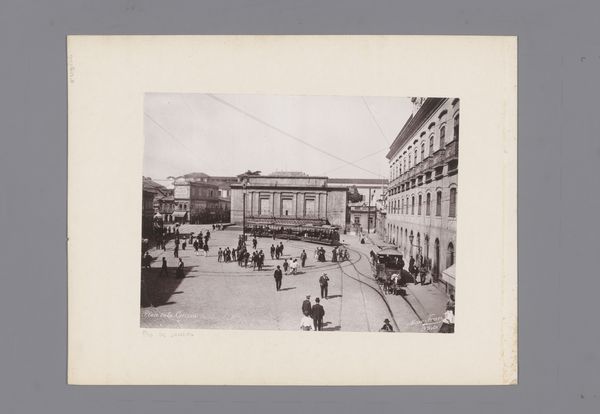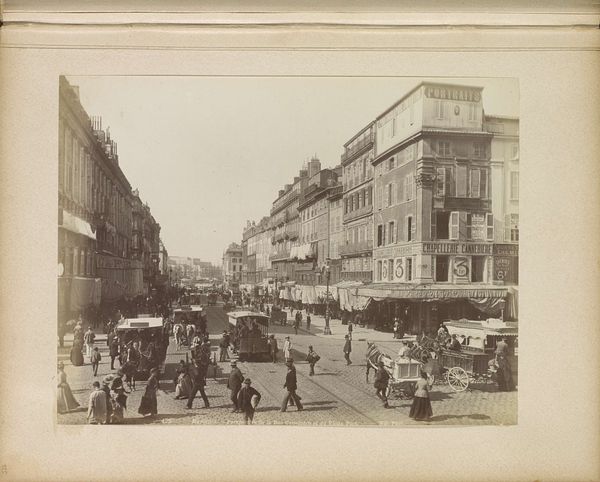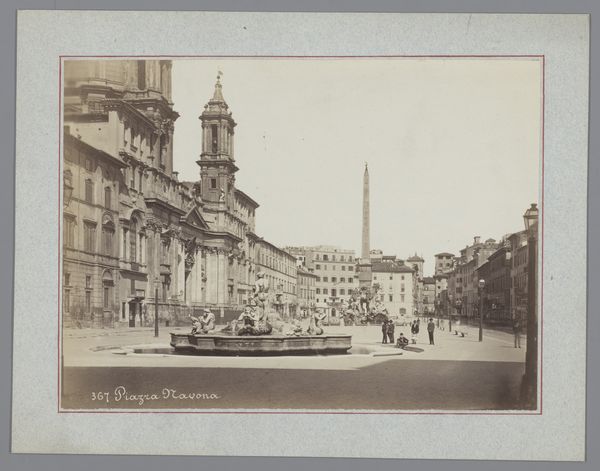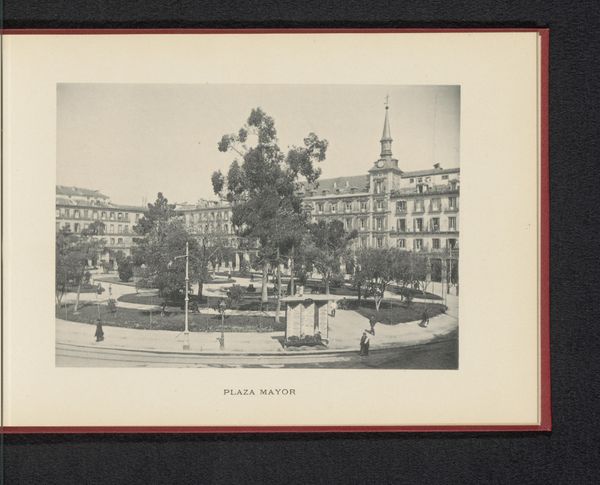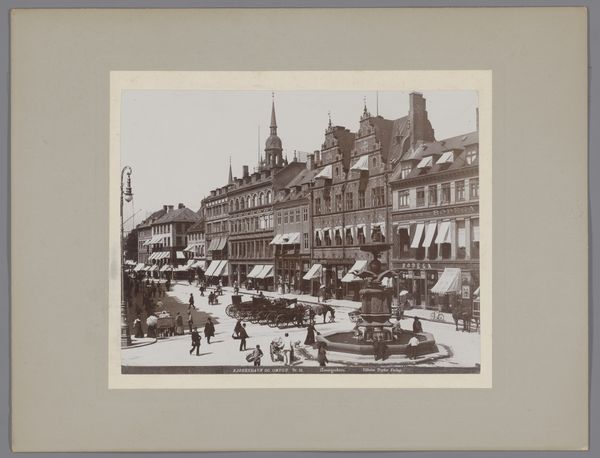
print, photography, gelatin-silver-print
# print
#
photography
#
orientalism
#
gelatin-silver-print
#
cityscape
#
realism
Dimensions: height 115 mm, width 163 mm
Copyright: Rijks Museum: Open Domain
Curator: Looking at this piece, one is immediately struck by its atmospheric qualities. This is "Gezicht op het Puerta del Sol in Madrid" ("View of the Puerta del Sol in Madrid"), a gelatin silver print created by Hauser y Menet sometime between 1888 and 1898. Editor: It feels remarkably balanced, even though it’s teeming with figures. The trams create these strong diagonals which help to separate the scene. I can hear the clamor of the city looking at this! Curator: Indeed, Hauser y Menet capture a moment of intense urban activity. Notice the detail. One is provided an ordered composition – a structured view onto Spanish urban life. Consider also the emergent technologies visible: the trams as well as photography itself as a relatively recent form. Editor: But this isn't just a record, it is carefully framing a public space during a transitional period, visually reflecting both aspiration and societal organization of that period. There is something about that light that idealizes urban experience through Realist tenets, I think. This must have impacted civic understanding of Madrid. Curator: Realism through a photograph can make one skeptical, since you can also consider that everything included in a picture had to be present in reality. However, this can also be interpreted through its composition, as you pointed out earlier, and the photographer still selected elements with care to direct your gaze. The semiotic charge in photographic realism has a truth claim to what existed. Editor: True, what gets shown in any given representation is a construction. What remains fascinating to me is the way such a work participated in an emerging, self-aware perception of a city undergoing monumental transformations in social structures. Curator: I see how you are tracing the social currents running through it. Editor: Absolutely, these new technologies shown hint at transformations shaping Madrid during its modernization, influencing individual behavior in profound ways as seen within public spaces and private identities reflected by those people there within that framed photo. Curator: A captivating photograph, then, offering not only an image, but also a complex representation of social and aesthetic negotiations during a period marked by immense change. Editor: Yes, it's fascinating how photographic form gives visibility to an understanding both reflective and anticipatory—a potent mixture within culture during transformation times such at that time!
Comments
No comments
Be the first to comment and join the conversation on the ultimate creative platform.
